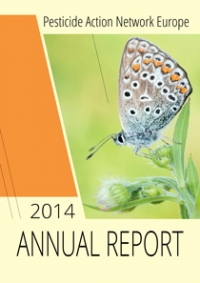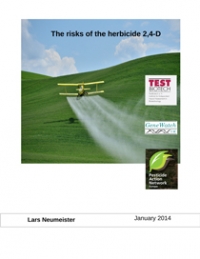Reports
PAN Europe Annual Report 2014
Including stories of success from the PAN Europe Network.
Risks of herbicide 2,4-D
Growing of genetically engineered plants likely to increase spraying of “agent orange herbicide” - if approved, it could be imported into the EU as GM animal feed.
A Poisonous Injection
How industry tries to water down the risk assessment of pesticide mixtures in everyday food.
Missed & Dismissed
Pesticide regulators ignore the legal obligation to use independent science for deriving safe exposure levels.
Also available in French.
Meet (chemical) agriculture - The world of backdoors, derogations, sneaky pathways and loopholes - part 5
Italy beats all other EU member states in keeping unsustainable farming practices alive in intensive fruit and vegetable production.
PAN Europe Annual Report 2013
including stories of success from the PAN Europe Network.
PAN report - The “120-day derogation”
Meet (Chemical) Agriculture. In 2011, EU Member States granted 230 pesticide authorizations for emergency situations
Extra download: derogations in 2007-2012 (xls)
PAN report - Disrupting food
Endocrine disrupting chemicals
in European Union food.









